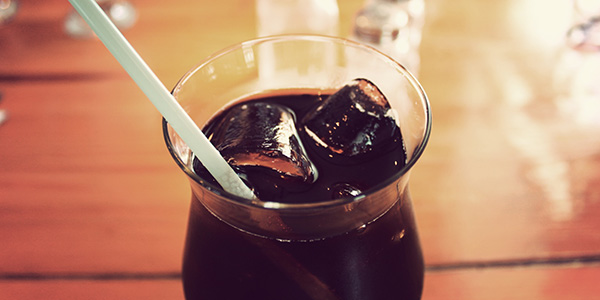Earlier this year, Fortune reported that “Soda Consumption Falls to 30-Year Low in The U.S.” The story named diet soda brands as “the big losers yet again,” citing consumer skepticism over artificial sweeteners, namely aspartame, as a main driver of steadily declining sales.
Pepsi made a bold attempt to get in front of this problem. In 2015, amidst concerns over studies linking aspartame to obesity and cancer, the company took steps to win back consumers. It re-formulated Diet Pepsi using sucralose (think yellow Splenda packet).
Now—not even a year later—Pepsi is poised to bring back aspartame…with a bang. In September, the original Diet Pepsi formula will return in “retro light blue packaging,” as explained in a CNN Money post. The company plans to keep the new sucralose formula, too, which will remain in its current silver packaging. A Diet Pepsi advertisement on the post page features the image of side-by-side cans with a single, bolded line of copy: “Aspartame is back!”
While aspartame.org provides a long list of prominent organizations and regulatory agencies throughout the world that deem it safe, outsiders like Dr. Joseph Mercola aren’t buying it. In a post addressing the comeback of aspartame, he cites numerous research studies, including a 2014 study published in PLOS One that concludes that aspartame consumption is implicated in the development of obesity and metabolic disease despite the intention of limiting caloric intake.
As Mercola’s article points out, aspartame is not the only culprit. Sucralose has been shown to affect, among other things, insulin response. It was used by researchers collaborating on a new study from the University of Sydney’s Charles Perkins Center and the Gavin Institute of Medical Research. Highlights of their findings include the following: Chronic sucralose diet triggers increased food intake; dietary sucralose creates a sweet/energy imbalance; and a sweet/energy imbalance activates a conserved neuronal starvation response.
In his article for Scientific American entitled “How Artificial Sweeteners May Cause Us to Eat More,” Bret Stetka explores the University of Sydney study (originally Published in Cell Metabolism). He opens by reminding readers that, “A vast body of research suggests that sugar substitutes, despite having far fewer calories than sugar itself, can wreak various forms of metabolic havoc such as upping diabetes risk and—perhaps paradoxically—causing weight gain in the long term.”
Stetka goes on to overview the findings of the study, which was conducted first on fruit flies and then on mice. In both instances, there were two groups. One was fed a diet of yeast and sucrose, and the other a diet of sucralose. Flies fed the sucralose diet for five or more days consumed 30 percent more calories than those on sugar. Mice on a sucralose diet for seven days showed a 50 percent increase in food consumption.
Researchers also employed a “taste test” technique, which led them to the conclusion that sucralose consumption resulted in an increased motivation to eat real sugar. The team identified a neural network that appears to be responsible for the hunger-inducing effects of artificial sweeteners. Stetka quotes Greg Neely, associate professor of genomics and study lead author, “…when the brain detects sweetness in the absence of actual caloric energy, it compensates by increasing the palatability of sugar, driving increased food consumption.”
This makes sense given the complex role of taste in directing metabolic functions. When a sweet flavor hits the tongue, sweet-sensing taste buds signal the brain to prepare to process sugar. Yet, in the case of sweetness derived from artificial sweeteners, what the brain and body recognize as sugar (found in nature) never arrives. This eventually triggers a false alert for starvation.
To complicate matters, our brains evolved to release dopamine upon tasting sweet and savory (i.e., sugar and fat) for good reason: food was scarce. This “reward center” response encouraged hunters and gatherers to consume and secure more of the right types of fuels when they encountered them.
Put it all together in the modern day context of consuming low-calorie sweeteners, and you have an uptick in both reward and starvation signals. A type of “short-circuiting” takes place that researchers like Neely are getting closer and closer to definitively proving. (For links to more insight and research, read Mother Jones’ take on the study in “Fake Sweeteners Make You Crave More Sweets.”)
Although diet soda has become the poster child for concerns surrounding artificial sweeteners, it is, quite literally, the tip of the iceberg. Aspartame.com—alone—reports that the sweetener is used in approximately 6,000 products consumed by 200 million people around the world. The implications of moving further down the path that Neely, his team and many others have begun to pave are tremendous.

